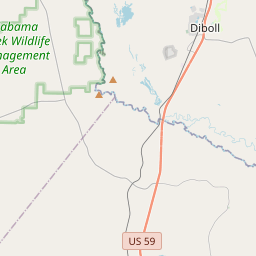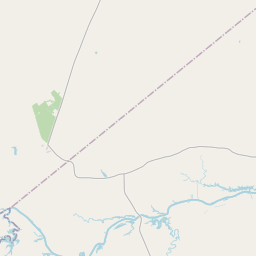George Washington Carver School
Historical marker location:












In 1881, the town of Groveton was established near the Trinity and Sabine Railway and Timber Company. With the availability for work, the area attracted settlers seeking employment. With the rapid increase in population, the need for services such as schools became apparent. By 1886, the Groveton Colored Community School operated within the school district but was underfunded.
Steady population growth increased the need for better educational facilities for the African American community. In 1900, the Trinity County Lumber Company sold land to the Groveton School Cooperation for a new school located in the African American neighborhood. A wood-frame building was erected and used until 1955.
In 1952, the school board purchased adjacent acreage and built a gymnasium, occasionally used for classrooms. By 1956, the school was known as George Washington Carver School in honor of the prominent botanist and inventor. Several years after purchasing additional acreage in 1955, the contract to build the new G.W. Carver School was awarded. After integration in 1965, the Carver School was repurposed as the Groveton Junior High.
Throughout the years, many outstanding African American men and women served as teachers and staff, dedicated to education, integrity and compassion. Most notably, Mr. T.L. Mathis who was principal from 1956 to 1965. Mr. Mathis worked tirelessly to improve and advocate for the school and its students. Activities were typically funded and/or organized by the community or students such as sporting events and the marching band, a testament to the community’s dedication to education and civic duty.
(2016)
As one of the most visible programs of the Texas Historical Commission (THC), historical markers commemorate diverse topics in Texas history, including: the history and architecture of houses, commercial and public buildings, religious congregations, and military sites; events that changed the course of local and state history; and individuals who have made lasting contributions to the state, community organizations, and businesses.
Texas is home to the world's largest bat colony. The Bracken Bat Cave, near San Antonio, is home to millions of Mexican free-tailed bats.
During the Civil War, Trinity County, like other parts of Texas, was predominantly pro-Confederate. The county contributed soldiers to the Confederate Army and faced several Union invasions. After the war, Trinity County faced economic challenges due to the loss of slavery and the devastation of crops and infrastructure. However, the discovery of lumber and the expansion of railroads in the late 19th century revitalized the local economy.
The timber industry became a major economic force in Trinity County during the late 1800s and early 1900s. Several sawmills were built, attracting workers and leading to the emergence of towns like Apple Springs and Pennington. Logging became a vital industry, with timber being transported via the railroads to markets across Texas and beyond. However, unsustainable logging practices eventually led to a decline in the industry, and today, forestry remains an important aspect of the county's economy.
In recent years, Trinity County has embraced its natural resources, including its pristine rivers, lakes, and forests, to develop tourism and recreational opportunities. Outdoor activities like fishing, hunting, boating, and hiking attract visitors from across the state. The county's rich history, marked by its Native American heritage, the Civil War era, and the lumber industry, is preserved in museums and historic sites, providing a glimpse into Trinity County's past.
Trinity County Timeline
This timeline provides a condensed summary of the historical journey of Trinity County, Texas.
- Founded in 1846 as part of Houston County
- 1848 - Trinity County was officially established as a separate county
- 1850 - Population of Trinity County was 1,027
- 1853 - The county seat was established in Sumpter
- 1873 - The county seat was moved to Pennington
- 1890 - The county seat was moved to Groveton
- 1890s - Timber industry became a major economic driver
- 1930s - Depression era brought economic challenges to the county
- 1944 - Construction of the Trinity River Authority Dam began
- 1952 - Trinity Dam was completed, forming Lake Livingston
- Present - Trinity County continues to be known for its natural beauty, outdoor recreation, and timber industry